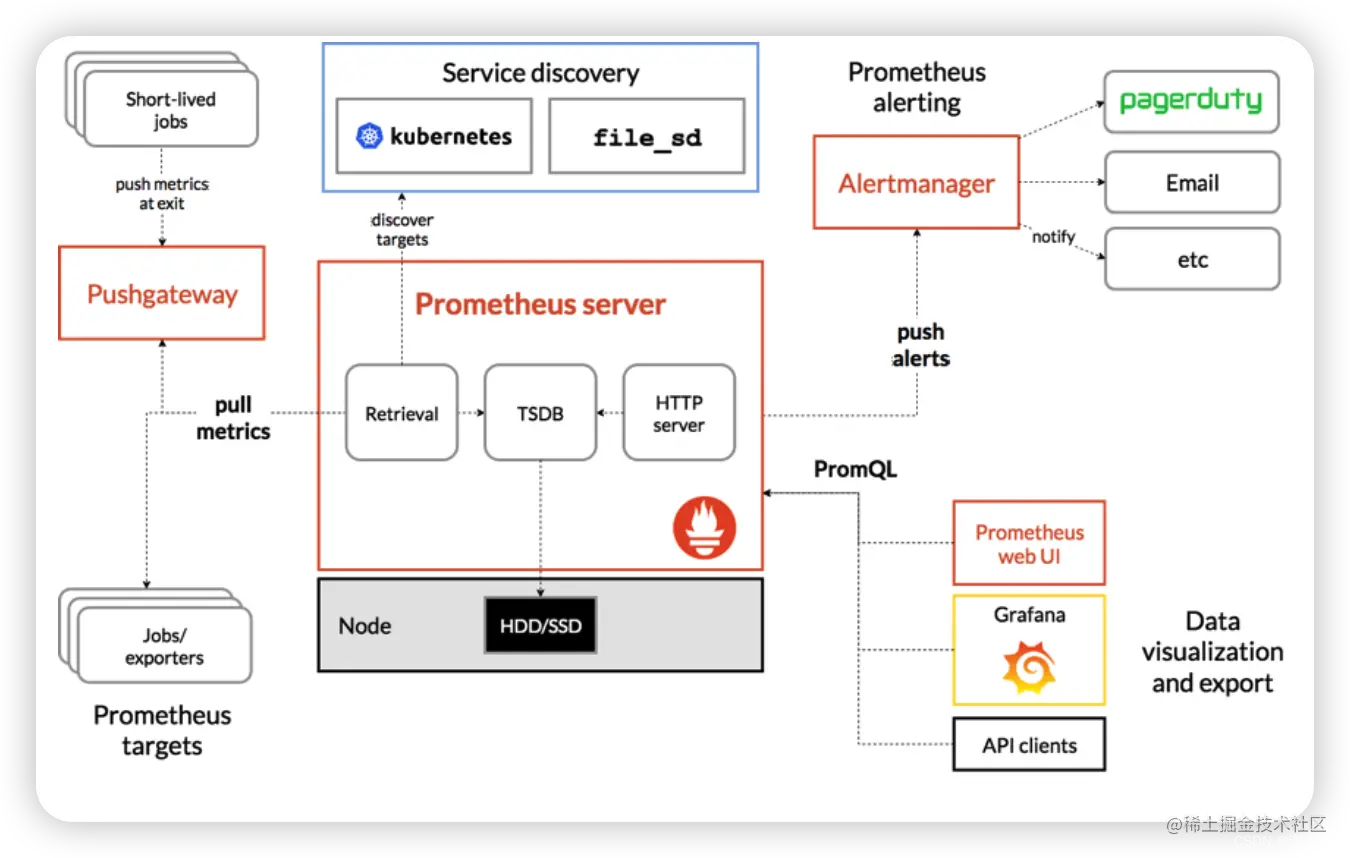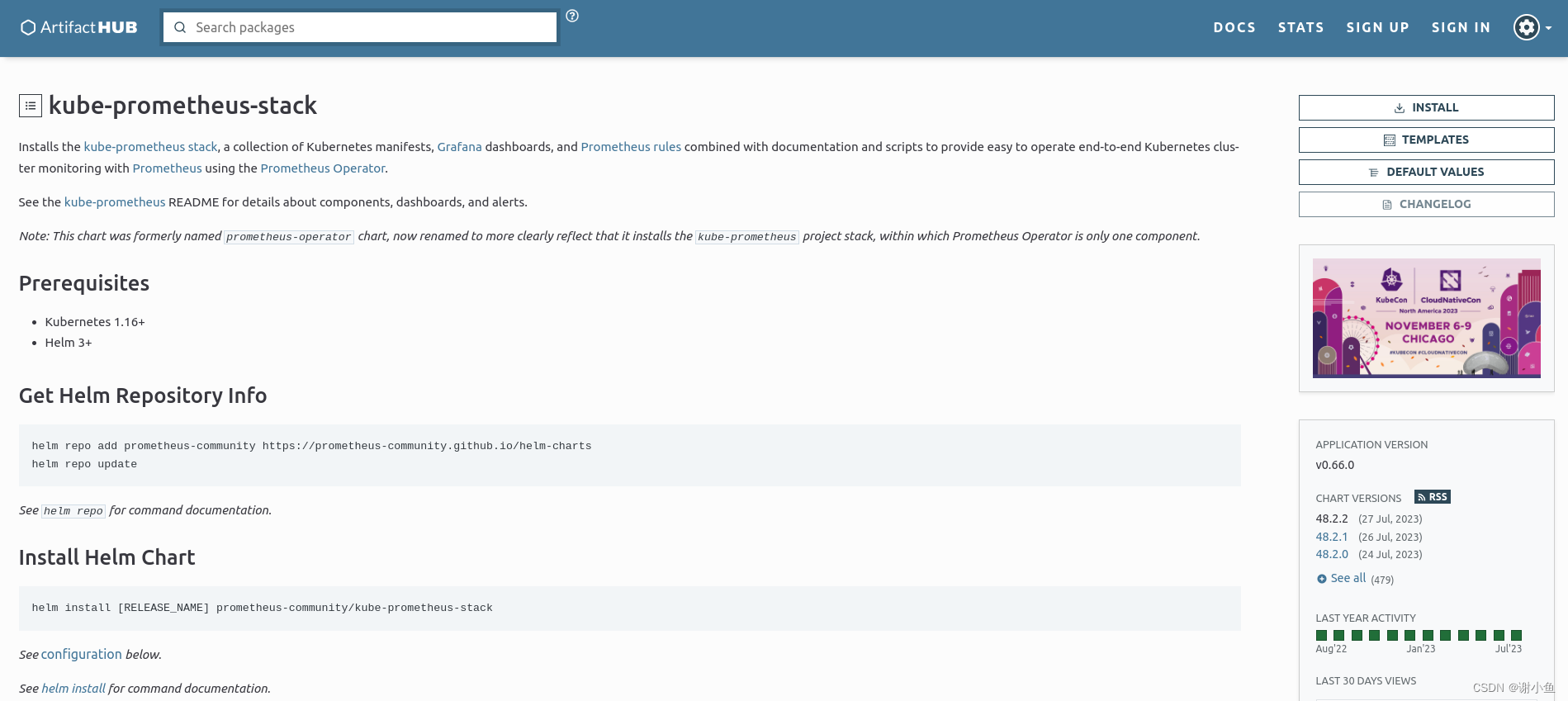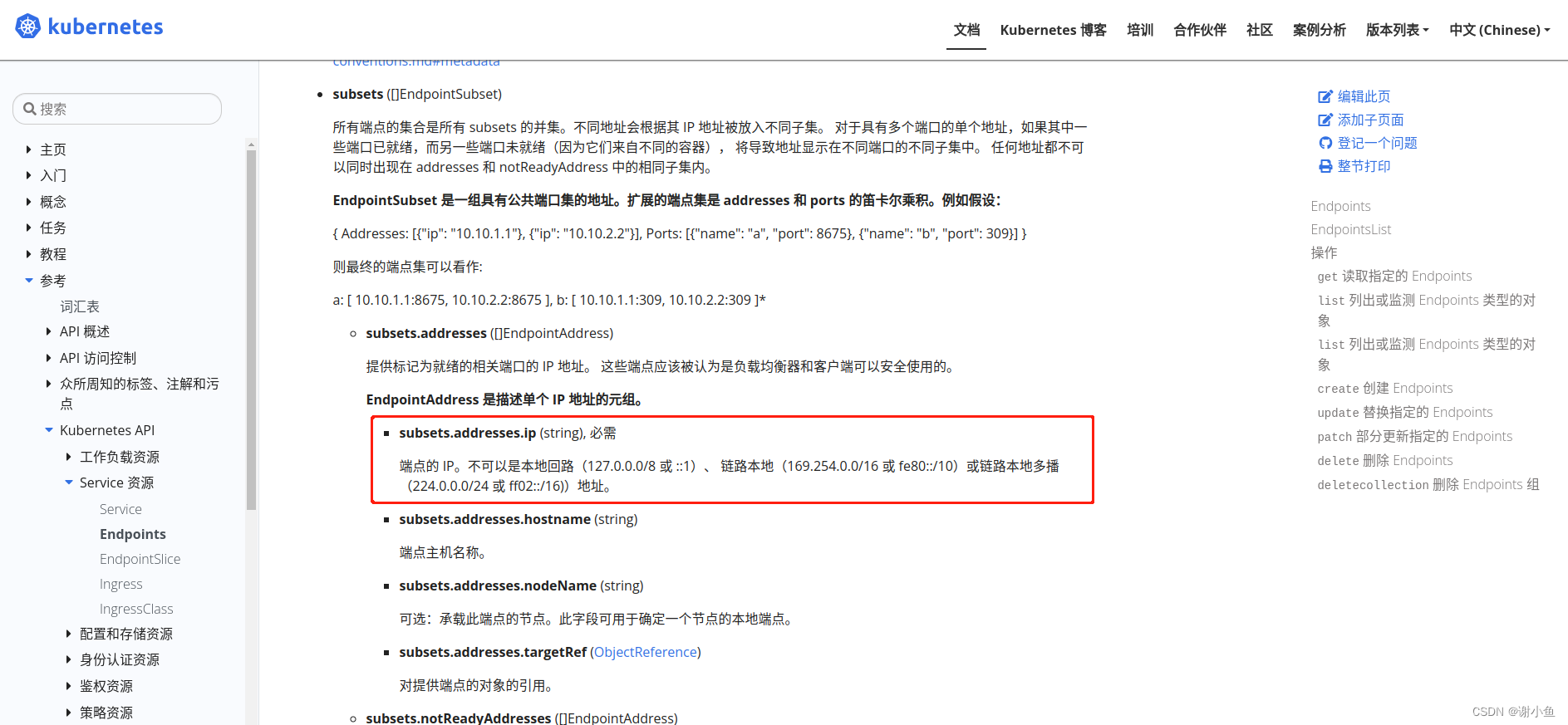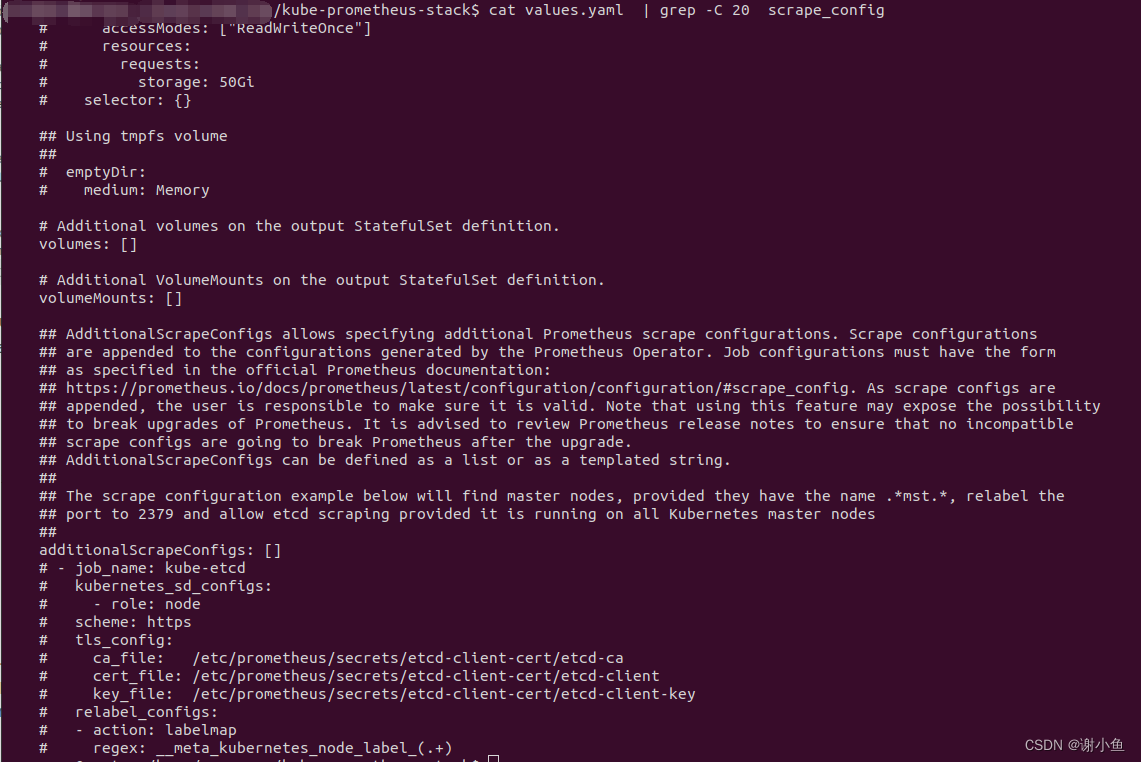基本架构
Prometheus由SoundCloud发布,是一套由go语言开发的开源的监控&报警&时间序列数据库的组合。
Prometheus的基本原理是通过HTTP协议周期性抓取被监控组件的状态,任意组件只要提供对应的HTTP接口就可以接入监控。不需要任何SDK或者其他的集成过程。这样做非常适合做虚拟化环境监控系统,比如VM、Docker、Kubernetes等。

Prometheus 主要的组件功能如下:
- Prometheus Server:server的作用主要是定期从静态配置的targets或者服务发现(主要是DNS、consul、k8s、mesos等)的 targets 拉取数据。
- Exporter: 主要负责向prometheus server做数据汇报。而不同的数据汇报由不同的exporters实现,比如监控主机有node-exporters,mysql有MySQL server exporter。
- Pushgateway:Prometheus获得数据的方式除了到对应exporter去Pull,还可以由服务先Push到pushgateway,server再去pushgateway 拉取。
- Alertmanager:实现prometheus的告警功能。
- webui:主要通过grafana来实现webui展示。
我们在实际使用的时候的基本流程就是:
各个服务push监控数据到其对应的指标(比如下面提到的Exporter) --> Prometheus Server定时采集数据并存储 --> 配置Grafana展示数据 & 配置告警规则进行告警
Helm部署Prometheus平台
使用helm部署kube-prometheus-stack
helm地址:传送门
github地址:传送门

首先需要在服务器上安装helm工具,怎么安装不再赘述,网上很多教程。使用helm安装prometheus的具体操作为:
helm repo add prometheus-community https://prometheus-community.github.io/helm-charts
helm repo update
helm install[RELEASE_NAME] prometheus-community/kube-prometheus-stack
Exporter
要采集目标的监控数据,首先就要在被采集目标地方安装采集组件,这种采集组件被称为Exporter。prometheus.io官网上有很多这种exporter,官方exporter列表。
采集完了怎么传输到Prometheus?
Exporter 会暴露一个HTTP接口,prometheus通过Pull模式的方式来拉取数据,会通过HTTP协议周期性抓取被监控的组件数据。
不过prometheus也提供了一种方式来支持Push模式,你可以将数据推送到Push Gateway,prometheus通过pull的方式从Push Gateway获取数据。
golang应用中接入采集组件
kratos框架
在微服务框架kratos中接入Prometheus采集组件的示例,kratos官方教程:
package main
import("context""fmt""log"
prom "github.com/go-kratos/kratos/contrib/metrics/prometheus/v2""github.com/go-kratos/kratos/v2/middleware/metrics""github.com/prometheus/client_golang/prometheus/promhttp""github.com/go-kratos/examples/helloworld/helloworld""github.com/go-kratos/kratos/v2""github.com/go-kratos/kratos/v2/transport/grpc""github.com/go-kratos/kratos/v2/transport/http""github.com/prometheus/client_golang/prometheus")// go build -ldflags "-X main.Version=x.y.z"var(// Name is the name of the compiled software.
Name ="metrics"// Version is the version of the compiled software.// Version = "v1.0.0"
_metricSeconds = prometheus.NewHistogramVec(prometheus.HistogramOpts{
Namespace:"server",
Subsystem:"requests",
Name:"duration_sec",
Help:"server requests duration(sec).",
Buckets:[]float64{0.005,0.01,0.025,0.05,0.1,0.250,0.5,1},},[]string{"kind","operation"})
_metricRequests = prometheus.NewCounterVec(prometheus.CounterOpts{
Namespace:"client",
Subsystem:"requests",
Name:"code_total",
Help:"The total number of processed requests",},[]string{"kind","operation","code","reason"}))// server is used to implement helloworld.GreeterServer.type server struct{
helloworld.UnimplementedGreeterServer
}// SayHello implements helloworld.GreeterServerfunc(s *server)SayHello(ctx context.Context, in *helloworld.HelloRequest)(*helloworld.HelloReply,error){return&helloworld.HelloReply{Message: fmt.Sprintf("Hello %+v", in.Name)},nil}funcinit(){
prometheus.MustRegister(_metricSeconds, _metricRequests)}funcmain(){
grpcSrv := grpc.NewServer(
grpc.Address(":9000"),
grpc.Middleware(
metrics.Server(
metrics.WithSeconds(prom.NewHistogram(_metricSeconds)),
metrics.WithRequests(prom.NewCounter(_metricRequests)),),),)
httpSrv := http.NewServer(
http.Address(":8000"),
http.Middleware(
metrics.Server(
metrics.WithSeconds(prom.NewHistogram(_metricSeconds)),
metrics.WithRequests(prom.NewCounter(_metricRequests)),),),)
httpSrv.Handle("/metrics", promhttp.Handler())
s :=&server{}
helloworld.RegisterGreeterServer(grpcSrv, s)
helloworld.RegisterGreeterHTTPServer(httpSrv, s)
app := kratos.New(
kratos.Name(Name),
kratos.Server(
httpSrv,
grpcSrv,),)if err := app.Run(); err !=nil{
log.Fatal(err)}}
最终暴露出一个
http://127.0.0.1:8000/metrics
HTTP接口出来,Prometheus可以通过这个接口拉取监控数据。
Gin框架
在轻量级HTTP框架Gin中接入Prometheus采集组件的示例:
package main
import("strconv""time""github.com/gin-gonic/gin""github.com/prometheus/client_golang/prometheus""github.com/prometheus/client_golang/prometheus/promhttp")var(
handler = promhttp.Handler()
_metricSeconds = prometheus.NewHistogramVec(prometheus.HistogramOpts{
Namespace:"server",
Subsystem:"requests",
Name:"duration_sec",
Help:"server requests duration(sec).",
Buckets:[]float64{0.005,0.01,0.025,0.05,0.1,0.250,0.5,1},},[]string{"method","path"})
_metricRequests = prometheus.NewCounterVec(prometheus.CounterOpts{
Namespace:"client",
Subsystem:"requests",
Name:"code_total",
Help:"The total number of processed requests",},[]string{"method","path","code"}))funcinit(){
prometheus.MustRegister(_metricSeconds, _metricRequests)}funcHandlerMetrics()func(c *gin.Context){returnfunc(c *gin.Context){
handler.ServeHTTP(c.Writer, c.Request)}}funcWithProm() gin.HandlerFunc {returnfunc(c *gin.Context){var(
method string
path string
code int)
startTime := time.Now()
method = c.Request.Method
path = c.Request.URL.Path
c.Next()
code = c.Writer.Status()
_metricSeconds.WithLabelValues(method, path).Observe(time.Since(startTime).Seconds())
_metricRequests.WithLabelValues(method, path, strconv.Itoa(code)).Inc()}}funcmain(){
r := gin.Default()
r.Use(WithProm())
r.GET("/ping",func(c *gin.Context){
c.JSON(200, gin.H{"message":"pong",})})
r.GET("/metrics",HandlerMetrics())
r.Run()// 监听并在 0.0.0.0:8080 上启动服务}
最终暴露出一个
http://127.0.0.1:8080/metrics
HTTP接口出来,Prometheus可以通过这个接口拉取监控数据。
抓取集群外部数据源
背景:在已有的K8s集群中通过
helm部署了一个
kube-prometheus-stack,用于监控服务器和服务。现在已经将k8s集群中的node、pod等组件接入到prometheus了。还需要将部署在k8s集群外部的其他应用服务接入到prometheus。
prometheus抓取k8s集群外部的数据时,有以下途径:
- ServiceMonitor
- Additional Scrape Configuration
ServiceMonitor
ServiceMonitor 是一个CRD,它定义了 Prometheus 应该抓取的服务端点以及抓取的时间间隔。
通过ServiceMonitor监控集群外部的服务,需要配置Service、Endpoints和ServiceMonitor。
现在有一个已经部署到
192.168.1.100:8000
的后端服务,已经通过
/metrics
将监控指标暴露出来了。尝试将其接入到prometheus,具体操作如下:
在命令行中输入
$ touch external-application.yaml
$ vim external-application.yaml
然后将下面的yaml文件内容拷贝进去
---apiVersion: v1
kind: Service
metadata:name: external-application-exporter
namespace: monitoring
labels:app: external-application-exporter
app.kubernetes.io/name: application-exporter
spec:type: ClusterIP
ports:-name: metrics
port:9101protocol: TCP
targetPort:9101---apiVersion: v1
kind: Endpoints
metadata:name: external-application-exporter
namespace: monitoring
labels:app: external-application-exporter
app.kubernetes.io/name: application-exporter
subsets:-addresses:-ip: 192.168.1.100 # 这里是外部的资源列表ports:-name: metrics
port:8000-addresses:-ip: 192.168.1.100 # 这里是外部的资源列表2ports:-name: metrics
port:8080---apiVersion: monitoring.coreos.com/v1
kind: ServiceMonitor
metadata:name: external-application-exporter
namespace: monitoring
labels:app: external-application-exporter
release: prometheus
spec:selector:matchLabels:# Service选择器app: external-application-exporter
namespaceSelector:# Namespace选择器matchNames:- monitoring
endpoints:-port: metrics # 采集节点端口(svc定义)interval: 10s # 采集频率根据实际需求配置,prometheus默认10spath: /metrics # 默认地址/metrics
保存好文件之后运行命令:
kubectl apply -f external-application.yaml
之后打开prometheus控制台,进入Targets目录。可以看到新增的external-application-exporter显示出来了:


Additional Scrape Configuration
除了ip加端口提供的HTTP服务以外,我还在其他服务器上部署了可以通过域名访问的HTTPS服务。现在想用同样的方法将其接入进来。
首先尝试修改
Endpoints
,找到k8s的官方文档,发现
Endpoints
仅支持
ip
,也没有配置
HTTPS
协议的地方。
那么我们尝试换一种方式。
第一种方法
首先查阅官方文档,找到关于关于prometheus抓取配置的地方,可以看到,prometheus的抓取配置的关键字是
scrape_config

我们的prometheus是通过helm部署kube-prometheus-stack得到的,所以我们查看一下该charts的value.yaml文件,看看有无配置。
输入命令:
$ cat values.yaml |grep-C20 scrape_config
得到如下结果:
从注释中知道,kube-prometheus是通过additionalScrapeConfigs配置抓取策略的。
于是写一个配置文件去更新helm已经部署好的prometheus的release。
$ touch prometheus.yml
$ vim prometheus.yml
将一下内容写入:
prometheus:prometheusSpec:additionalScrapeConfigs:-job_name: external-application-exporter-https
scrape_interval: 10s
scrape_timeout: 10s
metrics_path: /metrics
scheme: https
tls_config:insecure_skip_verify:truestatic_configs:-targets:["www.baidu.com:443"]
最后更新release:
$ helm upgrade -nmonitoring-f prometheus.yaml prometheus kube-prometheus-stack-40.0.0.tgz
使用
prometheus.yaml
更新release,其中
kube-prometheus-stack-40.0.0.tgz
是我在部署prometheus时已经helm pull到本地的chart文件。
我们在prometheus的控制台的Targets目录下可以看到我们新添加的数据源。
到这里其实就可以结束了,但是有一个不好的地方是,每次添加新的域名监控,都需要重新更新helm的release,不是特别方便。
第二种方法
翻一翻prometheus-operator的源码,发现在说明中,有关于抓取配置热更新的教程。简单的概括就是,通过配置secret,来控制prometheus的抓取数据源。secret的内容修改时,可以热更新prometheus的抓取配置。截个图看一下:

第一步,生成
prometheus-additional.yaml
文件
$ touch prometheus-additional.yaml
$ vim prometheus-additional.yaml
prometheus-additional.yaml
内容:
-job_name: external-application-exporter-https
scrape_interval: 10s
scrape_timeout: 10s
metrics_path: /metrics
scheme: https
tls_config:insecure_skip_verify:truestatic_configs:-targets:["www.baidu.com:443"]
第二步,生成secret
生成用于创建secret的配置文件:
$ kubectl create secret generic additional-scrape-configs --from-file=prometheus-additional.yaml --dry-run=client -oyaml> additional-scrape-configs.yaml
$ cat additional-scrape-configs.yaml
可以看到生成的
additional-scrape-configs.yaml
内容如下:
apiVersion: v1
data:prometheus-additional.yaml: LSBqb2JfbmFtZTogZXh0ZXJuYWwtYXBwbGljYXRpb24tZXhwb3J0ZXItaHR0cHMKICBzY3JhcGVfaW50ZXJ2YWw6IDEwcwogIHNjcmFwZV90aW1lb3V0OiAxMHMKICBtZXRyaWNzX3BhdGg6IC9tZXRyaWNzCiAgc2NoZW1lOiBodHRwcwogIHRsc19jb25maWc6CiAgICBpbnNlY3VyZV9za2lwX3ZlcmlmeTogdHJ1ZQogIHN0YXRpY19jb25maWdzOgogICAgLSB0YXJnZXRzOiBbImNpYW10ZXN0LnNtb2EuY2M6NDQzIl0K
kind: Secret
metadata:creationTimestamp:nullname: additional-scrape-configs
将这段编码解码看一下内容:
$ echo"LSBqb2JfbmFtZTogZXh0ZXJuYWwtYXBwbGljYXRpb24tZXhwb3J0ZXItaHR0cHMKICBzY3JhcGVfaW50ZXJ2YWw6IDEwcwogIHNjcmFwZV90aW1lb3V0OiAxMHMKICBtZXRyaWNzX3BhdGg6IC9tZXRyaWNzCiAgc2NoZW1lOiBodHRwcwogIHRsc19jb25maWc6CiAgICBpbnNlY3VyZV9za2lwX3ZlcmlmeTogdHJ1ZQogIHN0YXRpY19jb25maWdzOgogICAgLSB0YXJnZXRzOiBbImNpYW10ZXN0LnNtb2EuY2M6NDQzIl0K"| base64 -d
得到:
-job_name: external-application-exporter-https
scrape_interval: 10s
scrape_timeout: 10s
metrics_path: /metrics
scheme: https
tls_config:insecure_skip_verify:truestatic_configs:-targets:["www.baidu.com:443"]
可以确认配置文件生成无误,接着生成secret:
$ kubectl apply -f additional-scrape-configs.yaml -n monitoring
monitoring是prometheus部署所在的命名空间,把它们放到同一个命名空间。
确认secret生成了:
$ kubectl get secret -n monitoring
输出:
最后,修改CRD
Finally, reference this additional configuration in your prometheus.yaml CRD.
官方文档让我们修改prometheus的配置
先找到prometheus这个CRD:
$ kubectl get prometheus -n monitoring
NAME VERSION REPLICAS AGE
prometheus-kube-prometheus-prometheus v2.38.0 1 2d18h
然后修改它
$ kubectl edit prometheus prometheus-kube-prometheus-prometheus -n monitoring
apiVersion: monitoring.coreos.com/v1
kind: Prometheus
metadata:name: prometheus
labels:prometheus: prometheus
spec:...additionalScrapeConfigs:name: additional-scrape-configs
key: prometheus-additional.yaml
...
最后,在prometheus控制台看一下效果:
域名服务已经监控上了,以后想添加其他域名监控,只需要修改secret就行,great!!!
告警
关于告警,我们采用prometheus+alertmanager这一套方案。从监控告警信息到处置告警事件的主要流程如下:
我们的业务需求是,在服务挂了的时候能够收到通知,及时处置。所以我们这里需要配置的告警规则为,收集应用的存活信息,当检测到不存活状态,告警消息状态设为
peding
。当peding时长到达一定时间阈值,就将其设为
firing
,此时触发告警,告警信息提交到
alertmanager
,然后在alertmanager中按照规则,发送告警消息给
消息接收者
,如企微、钉钉、邮件等。
具体的做法如下:
步骤一 prometheus告警触发器
参考:kube-prometheus-stack 告警配置
由于我是用helm部署的
kube-prometheus-stack
,为了保持版本一致性,将charts:
kube-prometheus-stack-40.0.0.tgz
提前下载(
helm pull prometheus-community/kube-prometheus-stack --version=40.0.0
)到本地了。解压之后,可以在
kube-prometheus-stack
的
values.yaml
中找到如下
PrometheusRules
相关入口:
## Deprecated way to provide custom recording or alerting rules to be deployed into the cluster.### additionalPrometheusRules: []# - name: my-rule-file# groups:# - name: my_group# rules:# - record: my_record# expr: 100 * my_record## Provide custom recording or alerting rules to be deployed into the cluster.###additionalPrometheusRulesMap: {}# rule-name:# groups:# - name: my_group# rules:# - record: my_record# expr: 100 * my_record
修改
values.yaml
:
## Deprecated way to provide custom recording or alerting rules to be deployed into the cluster.### additionalPrometheusRules: []# - name: my-rule-file# groups:# - name: my_group# rules:# - record: my_record# expr: 100 * my_record## Provide custom recording or alerting rules to be deployed into the cluster.##additionalPrometheusRulesMap:rule-name:groups:-name: Instance
rules:# Alert for any instance that is unreachable for >5 minutes.-alert: InstanceDown
expr: up == 0
for: 5m
labels:severity: page
annotations:summary:"Instance {{ $labels.instance }} down"description:"{{ $labels.instance }} of job {{ $labels.job }} has been down for more than 5 minutes."
然后更新helm release
helm upgrade -nmonitoring prometheus --values=values.yaml ../kube-prometheus-stack-40.0.0.tgz
更新完成后在prometheus控制台查看结果:
可以看到
alert rules
已经配置成功,根据告警规则,只要任意instance实例的状态不为
up == 0
,则会按照规则将alert状态改成peding,5分钟后仍未恢复,状态会变更为firing,触发告警消息。
步骤二 alertmanager 告警通知
参考:kube-prometheus-stack 配置AlertManager
prometheus触发器收集到了告警消息之后,会发送到alertmanager进行统一管理。alertmanager配置一定的规则,将告警消息分发给不同的接收者。
在
kube-prometheus-stack
的
values.yaml
中找到如下
alertmanager.config
相关入口。
alertmanager.config
提供了指定
altermanager
的配置,这样就能够自己定制一些特定的
receivers
。原始的配置如下:
## Configuration for alertmanager## ref: https://prometheus.io/docs/alerting/alertmanager/##alertmanager:...## Alertmanager configuration directives## ref: https://prometheus.io/docs/alerting/configuration/#configuration-file## https://prometheus.io/webtools/alerting/routing-tree-editor/##config:global:resolve_timeout: 5m
inhibit_rules:-source_matchers:-'severity = critical'target_matchers:-'severity =~ warning|info'equal:-'namespace'-'alertname'-source_matchers:-'severity = warning'target_matchers:-'severity = info'equal:-'namespace'-'alertname'-source_matchers:-'alertname = InfoInhibitor'target_matchers:-'severity = info'equal:-'namespace'route:group_by:['namespace']group_wait: 30s
group_interval: 5m
repeat_interval: 12h
receiver:'null'routes:-receiver:'null'matchers:- alertname =~ "InfoInhibitor|Watchdog"
receivers:-name:'null'templates:-'/etc/alertmanager/config/*.tmpl'
我们将其修改为:
## Configuration for alertmanager## ref: https://prometheus.io/docs/alerting/alertmanager/##alertmanager:...## Alertmanager configuration directives## ref: https://prometheus.io/docs/alerting/configuration/#configuration-file## https://prometheus.io/webtools/alerting/routing-tree-editor/##config:global:resolve_timeout: 5m
inhibit_rules:-source_matchers:-'severity = critical'target_matchers:-'severity =~ warning|info'equal:-'namespace'-'alertname'-source_matchers:-'severity = warning'target_matchers:-'severity = info'equal:-'namespace'-'alertname'-source_matchers:-'alertname = InfoInhibitor'target_matchers:-'severity = info'equal:-'namespace'route:group_by:['instance']group_wait: 30s
group_interval: 5m
repeat_interval: 12h
receiver:'wx-webhook'routes:receivers:-name:'wx-webhook'webhook_configs:-url:"http://wx-webhook:80/adapter/wx"send_resolved:truetemplates:-'/etc/alertmanager/config/*.tmpl'
其中
webhook_configs[0].url: "http://wx-webhook:80/adapter/wx"
中的地址为接受告警消息的企业微信群机器人webhook,企业微信群机器人webhook的搭建接下来会详细讲解。
然后更新helm release
helm upgrade -nmonitoring prometheus --values=values.yaml ../kube-prometheus-stack-40.0.0.tgz
配置完成后,关掉一个服务,在企业微信群查看结果:

步骤三 搭建企业微信群机器人webhook
参考:prometheus通过企业微信机器人报警
生成一个企微机器人
在群设置中,进入群机器人功能:
然后添加群机器人,复制添加的群机器人的
Webhook
地址
编写
deployment
配置文件
wx-webhook-deployment.yaml
:
apiVersion: apps/v1
kind: Deployment
metadata:name: wx-webhook
labels:app: wx-webhook
spec:replicas:1selector:matchLabels:app: wx-webhook
template:metadata:labels:app: wx-webhook
spec:containers:-name: wx-webhook
image: guyongquan/webhook-adapter:latest
imagePullPolicy: IfNotPresent
args:["--adapter=/app/prometheusalert/wx.js=/wx=https://qyapi.weixin.qq.com/cgi-bin/webhook/send?key=xxxxxxxxxxxxxxxxxxxxxx"]ports:-containerPort:80---apiVersion: v1
kind: Service
metadata:name: wx-webhook
labels:app: wx-webhook
spec:selector:app: wx-webhook
ports:-name: wx-webhook
port:80protocol: TCP
targetPort:80nodePort:30904type: NodePort
其中
args: ["--adapter=/app/prometheusalert/wx.js=/wx=https://qyapi.weixin.qq.com/cgi-bin/webhook/send?key=xxxxxxxxxxxxxxxxxxxxxx"]
的内容为上一步创建的企微机器人
Webhook
地址
紧接着运行命令:
$ kubectl apply -f wx-webhook-deployment.yaml -nmonitoring
$ kubectl get pod -n monitoring |grep wx-webhook
wx-webhook-78d4dc95fc-9nsjn 1/1 Running 0 26d
$ kubectl get service-n monitoring |grep wx-webhook
wx-webhook NodePort 10.106.111.183 <none>80:30904/TCP 27d
这样就完成了企业微信群机器人webhook的搭建。
这里我使用的是企业微信作为告警消息的接收者,alertmanager也支持其他消息接收者。可以参考这篇文章:kube-promethues监控告警详解(邮件、钉钉、微信、企微机器人、自研平台)
遇到的问题
- 更新抓取配置的secret后prometheus的控制台看不到效果 尝试重启pod:
prometheus-prometheus-kube-prometheus-prometheus-0,报错:
ts=2023-07-29T09:30:54.188Z caller=main.go:454 level=error msg=“Error loading config (–config.file=/etc/prometheus/config_out/prometheus.env.yaml)” file=/etc/prometheus/config_out/prometheus.env.yaml err=“parsing YAML file /etc/prometheus/config_out/prometheus.env.yaml: scrape timeout greater than scrape interval for scrape config with job name “external-application-exporter-https””
原因是,自定义指标的配置出错导致prometheus启动失败,scrape_interval和scrape_timeout存在问题
-job_name: external-application-exporter-https
scrape_interval: 10s
scrape_timeout: 30s
metrics_path: /metrics
scheme: https
tls_config:insecure_skip_verify:truestatic_configs:-targets:["www.baidu.com:443"]
需要改成
-job_name: external-application-exporter-https
scrape_interval: 10s
scrape_timeout: 10s
metrics_path: /metrics
scheme: https
tls_config:insecure_skip_verify:truestatic_configs:-targets:["www.baidu.com:443"]
引用
- Grafana & prometheus 入门
- Prometheus监控+Grafana+Alertmanager告警安装使用 (图文详解)
- Prometheus官方教程
- Helm仓库
- kube-prometheus项目的Github地址
- kratos官方教程
- K8s官方文档
- prometheus-operator的源码
- kube-prometheus-stack 告警配置
- kube-prometheus-stack 配置AlertManager
- prometheus通过企业微信机器人报警
- kube-promethues监控告警详解(邮件、钉钉、微信、企微机器人、自研平台)
版权归原作者 谢小鱼 所有, 如有侵权,请联系我们删除。